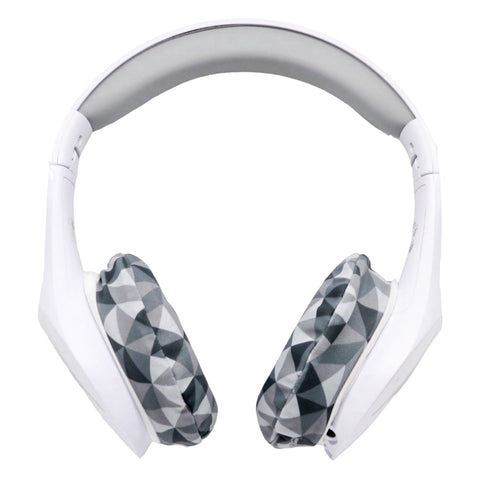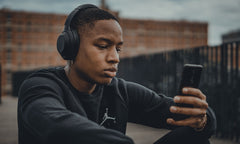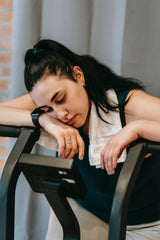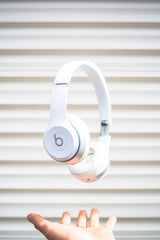How Do I Protect My Headphones?

Headphones are an integral part of daily life for a lot of people.
Students wear them in busy libraries, and workers in open-plan offices. Gym members wear them when working out and people wear them on long journeys. There’s even a growing number of in urban areas who wear them without any audio playing at all; they just enjoy turning on the active noise-cancellation and being quiet for a while.
So, it’s irritating and inconvenient when headphones get damaged and especially when they’re expensive to replace.
Wear and tear play their part, of course, but often damage comes directly from the way we wear and use them. It’s easy to be careless, but luckily, there are some simple steps you can take to help protect them from damage.
How Do I Protect My Headphones?
- The easiest way? It’s also a little patronising. Be more careful when you’re handling and wearing them. We’re all careless. We throw our headphones into bags and onto chairs; we drop them because we’re not paying attention to what we’re doing. And then one day, they snap, they crack, they start peeling or they stop working altogether.
Be more mindful of what you’re doing when you’re wearing them. Accidents will still happen, but it could stop you sitting on them, throwing them across a room, tossing them into the bottom of a gym bag or snagging the wire.
- Use moisture-resistant covers. Most headphones will handle a little bit of moisture but regular exposure can lead to long-lasting damage.
Sweat is one of the biggest culprits. It sits on the cushion and then dries into the material. Over time, it leaves the material flaking and cracking. It looks ugly, and it smells ugly, too. Wearing headphones during exercise can speed this process up. It’s a common problem with gamers and closed-back headphones, too.
Moisture-resistant headphone covers help. They’re made from the same sweat-wicking material commonly found in performance sportswear. The fabric pushes moisture towards the surface where it can evaporate more quickly. Without headphone covers, the sweat just sits there. It seeps into the cushion and over time causes the material to crack and peel. Wearing covers means that your headphones won’t smell like crap, and they’ll also stay looking fresh and crisp.
-
Wired headphones are vulnerable to damage because of (believe it or not) the wire. Or rather, where the wire meets the jack. When we’re careless with our headphones, we pull on the wire rather than on the jack. This puts stress on the wire and can cause a loose connection. Audio can fair in one of the headphone’s speakers. It’s common in earphones, too. Taking care to pull the wire out from a device in the correct place will help reduce the chances of damage occurring.
-
Trailing wires are vulnerable to getting caught on objects, snagged, yanked and damaged. Keeping them secure when you’re not listening is a good way of keeping them safe.
- And whilst we’re on the subject of wires, be careful with how you wrap them once you’re done. Twisting them around your headphones can lead to kinks that weaken the internal connections. It also puts added pressure onto the vulnerable spot between the jack and the device they’re plugged into. We wrote about the roadie wrap a few years ago, and it’s a good way to organise your cables and minimise the risk of damage.
- Make-up stains can make headphone earpads look ugly. It can be death sentence for headphones without removable earpads. They’re unhygienic, too. Add a pair of headphone covers to keep them foundation and sun cream-free.
- Protective cases are more than just for show. They’re the first line of defence when you’re traveling with your headphones. It can be a good idea to use one when you’re at home, too. If the one that came with your headphones isn’t up to standard (or if they’re sold separately), shop around. Find which one’s work for your lifestyle. Hard-shell or soft-shell, big or small, waterproof or not, they’re an easy way to keep your headphones safe. Cases also keep dust away when you’re not wearing them. They also prevent UV damage from yellowing white cushions.
- Avoid falling asleep in your headphones. It’s too easy to roll over and crack or snap the headband.
- Tighter fitting headphones can be stretched out to be more comfortable. Usually, you use the box they came in or the equivalent width in books to create a little space. It’s common practice when headphones are new, but be careful that you don’t over stretch them. It’s better to go slow and steady. Headphones that don’t clamp onto your head correctly may be too loose.
- This isn’t quite a tip, but it’s an idea. You could insure expensive headphones. This can be expensive. Headphones are easy to damage, and insurers know this. Always read the coverage before purchasing as carelessness may not be a valid enough reason for a pay-out.
Headphones are vulnerable to damage. Being careful with how you use and wear them can help reduce that risk. Buying premium branded headphones can help, too, but that's not always a guarantee, either. Adding moisture-resistant covers will help prevent damage from sweat and stains. You can shop our new collection by following the link below :)







